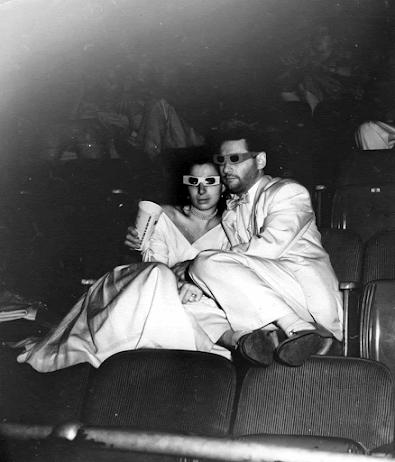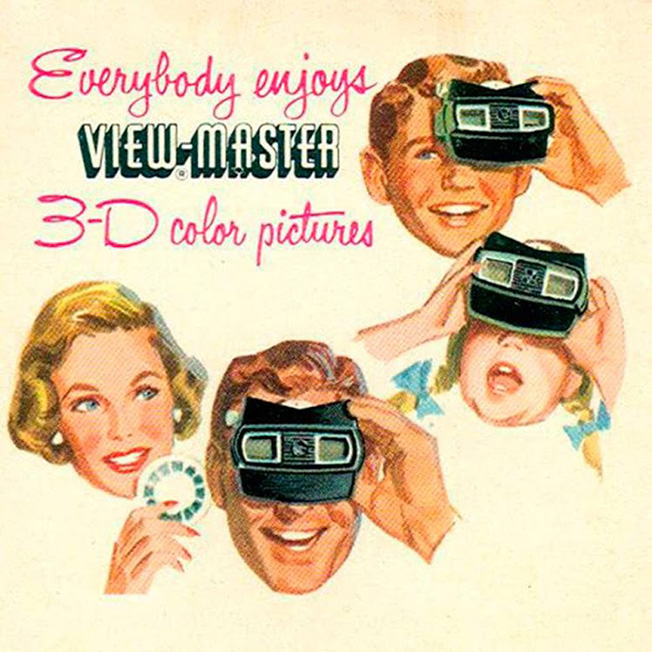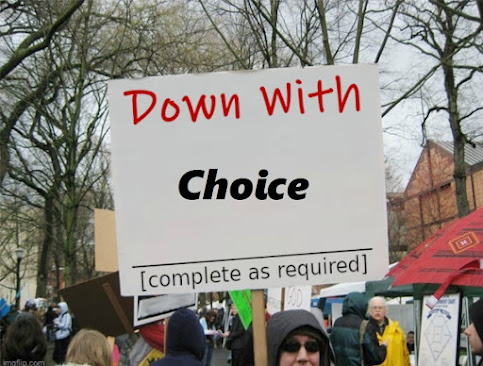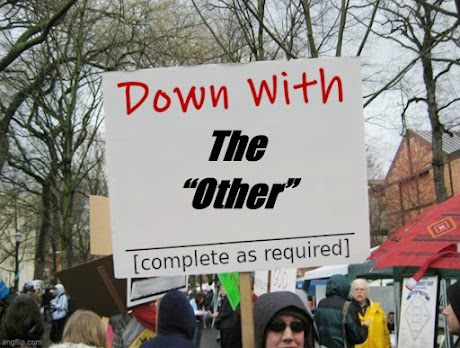10 Things I Love About "Kiss Me Kate"
It gives me great pleasure to announce that we are screening Kiss Me Kate in 3D at the Victoria Park Baptist Church on Thursday, the 26th of May
Kiss Me, Kate (the stage version had a comma; the film doesn't) is of course a re-working of The Taming of the Shrew.
Almost five decades later, 10 Things I Hate About You would also use The Taming of the Shrew as its source, and as an appropriate tribute, I present the following list.
10 Things I Love About Kiss Me Kate
10. It's Shakespeare
Okay, so this is one of Shakespeare's more problematic plays, but Shakespeare definitely knew how to write dialogue, and Cole Porter is one of the very few lyricists who could stand alongside him without looking foolish.
Many scenes in Kiss Me, Kate are lifted directly from the source material, and some (not all) of the more uncomfortable elements are softened by the fact that the two female leads (Lilli Vanessi and Lois Lane) are shown to be very strong, independent women who are victims to no one.
Some commentators have been concerned that the musical makes a joke of domestic abuse. After all, the Act One curtain does come down on Fred spanking Lilli onstage in front of a theatre-full of people. But abuse requires a victim, and Lilli is no doormat; she and Fred approach their relationship very much as equals. It's made very clear that neither one is prepared to be subservient to the other, but the battle between these two monster egos is going to continue - possibly forever. For them, it's not abuse; it's not oppression and it's not #MeToo. It's foreplay.
A very uncomfortable line from Shakespeare is retained in the onstage performance:
I will be master of what is mine own.
She is my goods, my chattels; she is my house,
My household stuff, my field, my barn,
My horse, my ox, my ass, my anything.
…delivered while cracking a whip at her, no less. It is therefore interesting to note that Lilli plans to run off with a Cattle Baron, who expects her to give up her career and start a family with him (this is actually a change from the Broadway version, where her fiancé is a politician). To Fred, Lilli is the greatest talent he has ever worked with, but to Tex, she is breeding stock. Needless to say, Tex is given the old heave-ho, and Lilli remains with Fred, to continue her highly successful career as a Broadway star. They will doubtless continue to fight each other, and they will doubtless continue to enjoy the fighting very much. She is no one's chattel.
9. Cole Porter's Lyrics
Very few writers are able to hold their heads up alongside Shakespeare, but Cole Porter is one of them. Porter could do things with the English language that barely seem legal:
Mr. Harris, Plutocrat;
Wants to give my cheek a pat;
If the Harris pat means a Paris Hat
I'll not say nay!
or,
My Purse has yet to know a silver lining;
Still lifeless is my wife-less family tree;
But if for love unending thou art pining;
Marry me, marry me, marry me!
and my personal favourite:
Where is Rebecca,
My Beccy-weccy-o?
Could still she be cruising
That amusing
Ponte Vecchio?
It may be the ultimate compliment that it is sometimes difficult to tell where Cole Porter ends and Shakespeare begins (or vice versa). Petruchio's two major songs, I've Come to Wive it Wealthily in Padua and Where is the life that late I led? are both lines taken directly from The Taming of the Shrew.
8. The Set Design
Much of the action of Kiss Me Kate takes place on stage during the opening night of the musical-within-a-musical, and the set design of that production explicitly references the work of Giorgio de Chirico.
De Chirico (who was very much alive and working when Kiss Me Kate was released) was famous for his proto-surrealist depictions of Italian-inspired architectural landscapes with very deep perspectives. The style lends itself very well to a stage production set in Shakespearean Verona, and filmed in 3D.
7. The Two Goons
Keenan Wynn and James Whitmore play the two mooks who pay a visit backstage to collect a gambling debt, only to find themselves roped in to the premiere (much to their bemusement).
Their characters don't have names (although they are referred to in some databases as "Lippy" and "Slug") and they appear to have wandered over from a nearby production of Guys and Dolls - although Guys and Dolls opened on Broadway a year after Kiss Me, Kate, and the film version wasn't released until 1955 (two years after Kiss Me Kate the movie).
They may be gangsters, but they are quite adorable, and they steal the show (Brush Up Your Shakespeare is a guaranteed showstopper). And James Whitmore is almost certainly playing his character as gay.
6. Hermes Pan's choreography
Most of the dance sequences in Kiss Me Kate were choreographed by Hollywood legend Hermes Pan. Best remembered for his long and successful collaboration with Fred Astaire (Pan choreographed almost all of the Fred & Ginger routines) Hermes Pan was largely responsible for the look of dancing in Hollywood musicals.
He and Fred Astaire always insisted that dancers be photographed full-body (no close-ups of feet, for example) and with no intrusive camera work. Generally speaking, the camera remains passive, following the dancer with no edits (or as few as possible) and no quirky angles.
For this film, Pan was able to work with some top-notch dancers, including Ann Miller, Bobby Van, Tommy Rall and Bob Fosse (see below).
He even makes a rare on-screen cameo appearance as a sailor ogling Ann Miller.
5. Bob Fosse
I said most of the dancing was choreographed by Hermes Pan.
In the small but vital role of "Third Suitor" was a young dancer by the name of Bob Fosse - at the time just another jobbing dancer trying to make a living in Show-business. According to legend, Hermes Pan saw him fooling around on the set between takes one afternoon, and was impressed enough to allow him to choreograph a short sequence of his own in "From This Moment On".
Fosse of course went on to become a show-business legend with his incredibly distinctive dancing style. He would eventually put his stamp on Cabaret, Sweet Charity and Chicago among many others, but in Kiss Me Kate we get our first (stereoscopic) glimpse of what he could do.
His dance partner in this sequence is Carol Haney, who worked with Fosse on a number of projects; most notably The Pyjama Game, before she died at the horribly young age of 39.
4. Kathryn Grayson and Howard Keel
Hollywood of this era had a bad habit of casting non-singers in some very high profile musicals. Marlon Brando was a wonderful actor, but his singing in Guys and Dolls left a lot to be desired. My Fair Lady may have been a career-defining moment for Julie Andrews on Broadway, but she was replaced in the film by Audrey Hepburn, who couldn't sing; couldn't act; and couldn't do a Cockney accent (apart from that she was perfect).
Everyone in West Side Story had to be dubbed (casting Natalie Wood was apparently more important than casting someone who could actually sing. Or was Puerto Rican) and almost everyone in South Pacific is dubbed as well. The Broadway production had turned Mary Martin and Ezio Pinza into household names (and the cast album had spent a mind-boggling 400 weeks in the charts) but neither of them made it into the film version.
Even Carmen Jones dubbed the singing voices of its stars, despite the fact that both Dorothy Dandridge and Harry Belafonte were magnificent singers (they simply had the wrong voices for the operatic singing required in Carmen).
In Kiss Me Kate, the lead roles of Fred Graham and Lilli Vanessi (aka Petruchio and Kathryn) are written for operatically trained voices. These are not songs to be bluffed through by a Marlon Brando or a Natalie Wood; they require singers who really know what they are doing. Of course that never stopped Hollywood studios before (or since) so it is all the more remarkable that Kathryn Grayson and Howard Keel both have the perfect voices for these roles.
At a time when so many other musicals opted for big-name stars over vocal prowess, Kiss Me Kate is practically in a class of its own.
3. Ann Miller
Ann Miller was a force of nature. By the time she starred in Kiss Me Kate she had already been in show-business for twenty years, but that was partly because she had lied about her age. In 1937 she danced alongside Ginger Rogers in Stage Door. Miller was 14 at the time, but no one knew that.
Her character in Kiss Me Kate could easily have been merely a dumb sex object, but she makes her so much more than that by making it clear that she is in complete control at all times. She was also a phenomenal dancer.
And please forgive me for mentioning this, but oh, those legs!
Most astonishingly of all, Petruchio's line about "The Lovely Lisa," who "Gave a new meaning to the Leaning Tower of Pisa" actually made it into the film.
Maybe the Censors didn't get it.
1. It's in 3D
In the early 1950s, Hollywood was in serious trouble. The 30s and 40s had been a time of pure profit for the major studios, but that had come to a crashing end during the post-war years.
The Baby Boom had left households with less disposable income and less free time for movie-going. A general move away from cities and into the suburbs meant husbands were spending more time commuting, while wives were adjusting to the loss of the autonomy they had enjoyed during the war years. Television (a relatively new arrival in many living rooms) was drawing attention away from movie theatres, and on top of all this, a Supreme Court ruling had barred the Studios from owning their own chains of theatres around the country.
The US Congress was also in the middle of blacklisting half of Hollywood.
All of these factors caused movie attendance to drop by an eye-watering 50% in the first years of the 1950s, and studios were desperate for anything to entice audiences back into cinemas.
One of the tactics they tried was 3D.
3D photography was actually fairly commonplace at the time, and had been for almost 120 years, but projecting a stereoscopic film to a theatre-full of people all at once proved to be a bit more complicated. Ultimately, the technique was judged to be more trouble than it was worth, and the experiment was abandoned in favour of other (simpler) innovations such as Widescreen, and stereophonic sound.
Kiss Me Kate is considered by many (myself included) to be one of the finest examples of 3D film-making of that era. It obviously helps that the film itself is so good (see above) but beyond that, the stereo photography is put to very intelligent use.
Much advantage is made of the idea of musical numbers as "performances" and quite a lot of it is delivered directly to the camera. While this can look quite forced in a "flat" movie, it reinforces the sensation of us as the literal audience, watching artists giving a performance (just as if they were on a stage, performing to us in person).
True, they also can't resist repeatedly throwing things at us (bless) but this was all part of Hollywood's increasingly desperate attempts to lure people away from their television sets.
Many modern films have all too obviously been converted into 3D as a very cynical afterthought (something that works about as well as converting a black & white film into colour) but Kiss Me Kate has clearly been conceived stereoscopically from the ground up.
And no, contrary to certain pseudo-scientific claims made recently, 3D photography is not unnatural and it is not harmful. View-Master viewers have been safely enjoyed by millions of people (including young children) for the last eighty-two years. I have not been made aware of a single View-Master related injury during that time.
Stereoscopes have been in use since 1838, again without incident. Indeed, opticians actually use stereography to correct a number of vision problems.
As for the frankly bizarre claim that the human eye cannot compensate for the disparity between "focus" and "convergence", well, I just don't know how anyone can say that with a straight face and still look at themselves in a mirror.
I mean that literally; I am not speaking metaphorically.
Whatever posterity has to say about 3D film-making, Kiss Me Kate will stand for all time as a demonstration of what can be achieved when The Taming of the Shrew is given The Illusion of Depth.
























Comments
Post a Comment